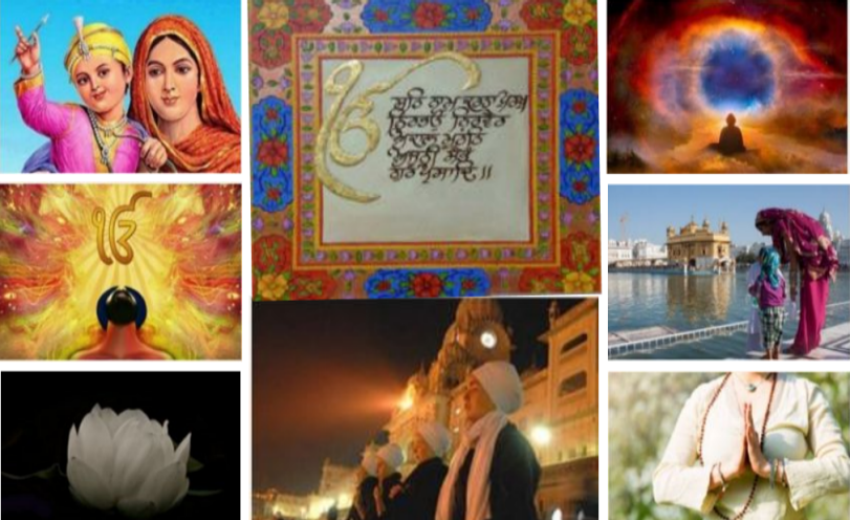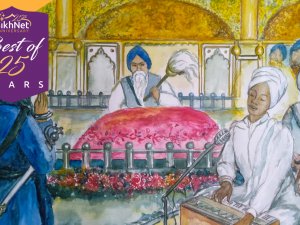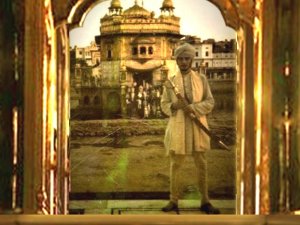"To See the World through the Guru's Eyes"
Mool Mantra and the Transmission of the Guru's Meditative Awareness
Read Part I here
Read Part II here
Read Part III here
Read Part IV here
Read Part V here
Read Part VI here
Read Part VII here
Read Part VIII here
Conclusion
In this series of articles, we have discussed the important role of meditation in early Sikh history. We have appreciated the evocative depiction of a geography of meditative experience using a rich pallet of conceptual, locational, physiological and subjective terminologies. We have studied Gurbani and historical accounts of the passing of the Guru's meditative awareness to his foremost disciples. We have also taken note of Guru Gobind Singh's warning against leaving his distinctive path and taking up a path of rituals. We have examined Sikh history and found there the first hints of the breaking of this chain of transmission in the mid 1700's when sheer survival from persecution and war were primary concerns. In the time of Maharaja Ranjit Singh, we observed the declining status of women and the rise of rituals in the imperial court and throughout Sikh society. We have also looked at the period of British colonial rule over the Sikhs, when many British habits and forms of thinking became predominant, never to recede even with the achievement of India's political independence.
Suggestions have been made to recover the vital transmission of meditative awareness from Guru to Sikh. These suggestions involve a refocussing of energies toward: spiritual training of children and youth, fostering individual and community well-being, research and education on the benefits of Sikh meditation, developing a culture of Sikh pride, and thoughtful outreach to other communities.
Sikh children and youth present a case of special concern. Innocent and unknowledgeable about Sikh teachings and traditions, they are utterly dependent on parents and elders for their guidance and support. As our case study has shown, a modern Sikh child as young as eight years old is capable of grasping and working with core Sikh concepts if they are presented to them in simple language and in human terms. The legacies of Guru Harkrishan, Bibi Nanaki, Baba Budha, Baba Fateh Singh and Baba Zorowar Singh bear witness that children can reach to high levels of spiritual realization if only they are properly instructed.
Children are children. They are innocent, but they are not stupid. They do not naturally crave digital entertainments. Insensitivity and addictive behaviours are first modelled by elders who in their pursuit of worldly objectives may ignore the reality of the precious, God-given souls at their feet.
Adults are uniquely situated to guide the fortunes of the young. Through their teaching and example, they may guide their children toward egotistical achievements of wealth, power and status and the stresses and calamities that go along with them. With wisdom, they may guide them instead to a life of contemplation and service of others.
Much is made of the supposed status of women in Sikh dharma, equal to men in all things. This work shows a dramatic drop in the role and prestige of womankind during the reign of Maharaja Ranjit Singh, a decline from which Sikh women arguably have never recovered. With the decline in women's position in Sikh society, there is also a virtual disappearance of women and children in meaningful roles in Sikh dharma which continues to this day.
Sikh dharma has behind it a glorious history of empowerment and social transformation. It carries with it also generations of physical and psychological trauma. It may be that some Sikhs today are too haunted by the ghosts and demons of the near and distant past - the genocidal Mir Mannu, the traitor Lal Singh, the mass murderer, General Dyer; the Partitionist, Muhammad Jinnah; the cunning Prime Minister, Indira Gandhi - to take their rightful place in the present.
The interruption of the unbroken transmission of the Guru's meditative awareness may be part cause and part consequence of these harrowing turns of history. It is the author's hope that a renewed and invigorated transmission of that inspired state of mind may take the Sikh nation from the depths of despair and disunity to a return to the heights of dedicated service and love of humanity.
It is hoped that the suggestions made here will be discussed and improved upon by those with an interest in them. Assuming the suggestions are more or less valid, a larger question arises: Who will implement them? Will souls at the apex of the foremost religious organization of Sikh dharma, the Shiromani Gurdwara Parbandhak Committee in Amritsar recognize a need for change and take the lead? Is there a possibility of grassroots education and mobilization? What are the chances of everyone working together to this end?
Time will tell.






